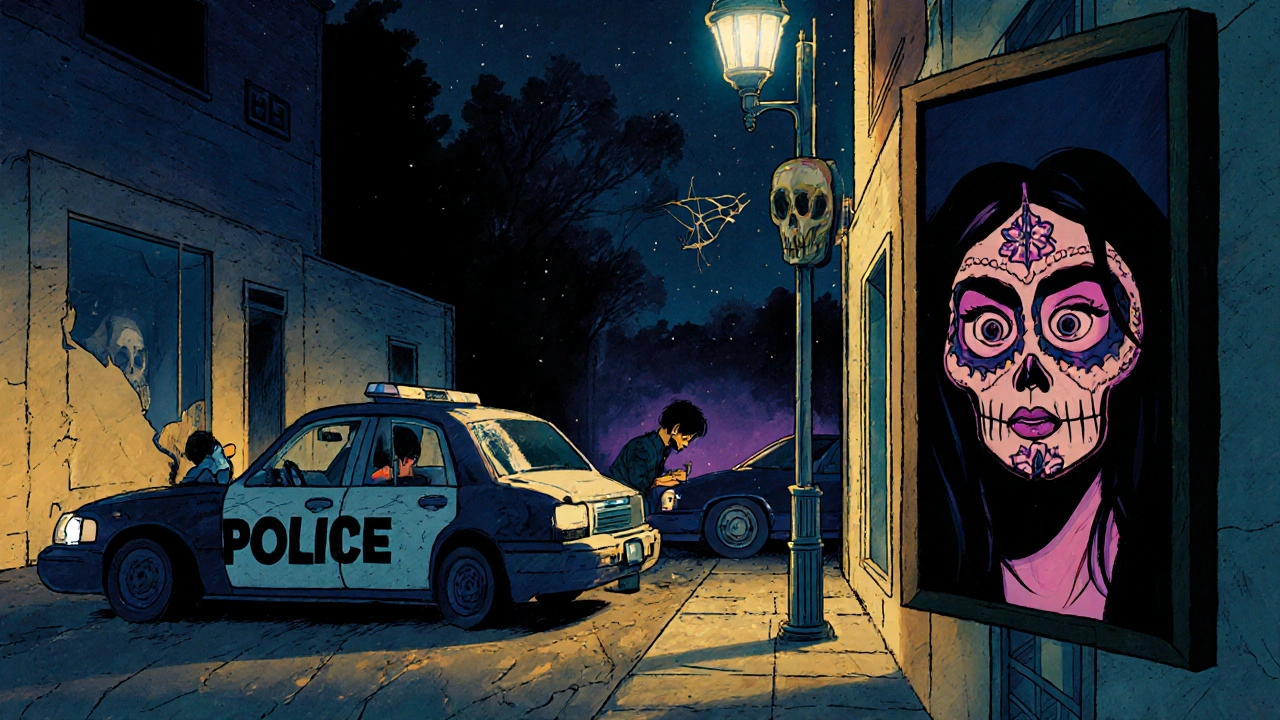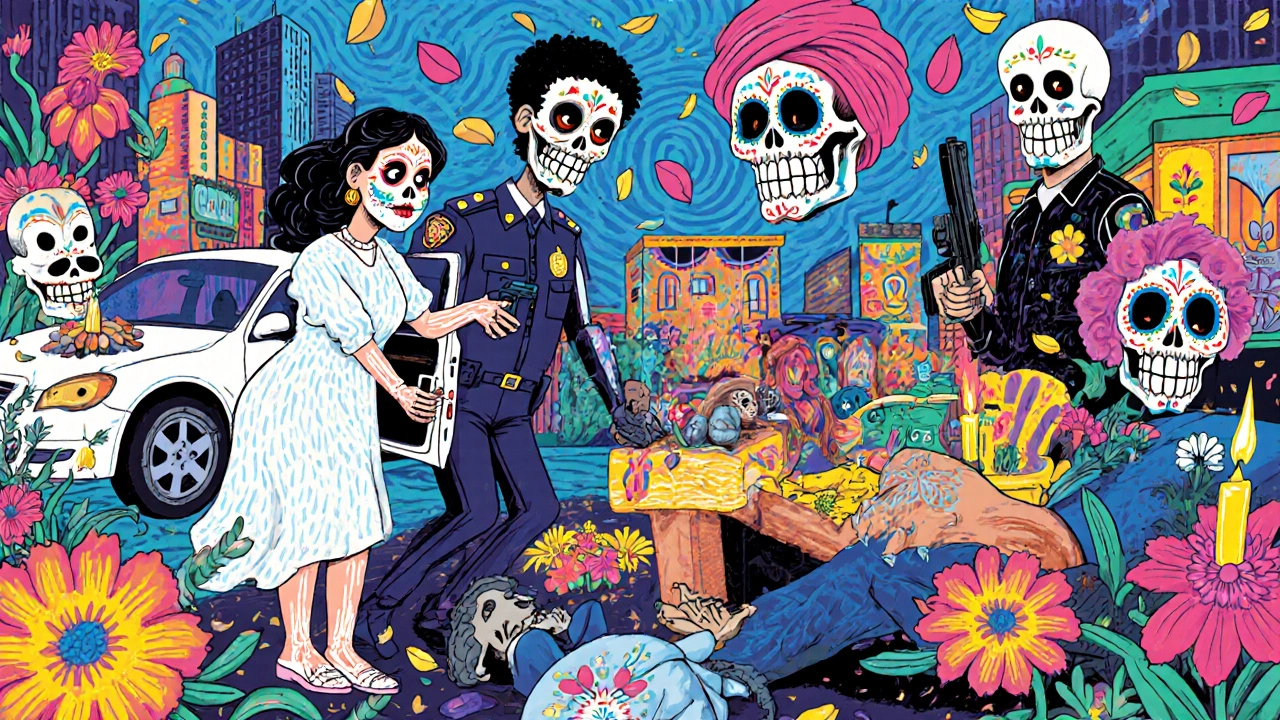Crash didn’t just win Best Picture at the 2006 Oscars-it ignited a firestorm. Critics called it heavy-handed. Audiences split down the middle. Some saw a bold, necessary look at race in America. Others called it a manipulative soap opera disguised as art. Ten years later, it still divides people. Why? Because Crash doesn’t offer easy answers. It throws you into a messy, uncomfortable world where everyone’s guilty, no one’s innocent, and prejudice isn’t always loud-it’s quiet, habitual, and buried in everyday choices.
What Crash Actually Is
Paul Haggis wrote and directed Crash as an ensemble drama. It’s not one story. It’s twelve. A district attorney and his wife get carjacked by two Black men. A white police officer sexually assaults a Black woman during a traffic stop. A Persian shop owner, furious after his store is robbed, buys a gun to protect himself. A Black detective secretly hates his own race. A white sheriff’s deputy, raised by a Black nanny, struggles with his own biases. These lives collide over 36 hours in Los Angeles.
The film’s structure is like a web. One person’s action ripples into another’s life. The carjacking leads to a hospital visit. A stolen gun leads to a shooting. A racist cop’s daughter ends up in the back of his cruiser. Haggis didn’t want to show villains and heroes. He wanted to show people who think they’re good, but still hurt others without meaning to.
Why It Won Best Picture
In 2005, the Academy was under pressure. The previous year’s winner, Million Dollar Baby, was praised for its emotional weight. But critics were calling Hollywood out for ignoring real social issues. Crash arrived at the perfect moment. It was a movie about race, class, fear, and redemption-topics the Academy loved to honor when packaged in a polished, Oscar-friendly way.
It beat out Good Night, and Good Luck, a quiet, black-and-white film about journalism and McCarthyism. It beat Capote, a masterclass in performance. It beat Walk the Line, a biopic with a breakout musical performance. Why? Because Crash felt urgent. It felt like it was speaking to America’s guilt. The Academy rewarded it not just for its craft, but for its message.
The Backlash: Why People Hated It
Here’s the truth: Crash is deeply flawed. And that’s why so many smart people still hate it.
It reduces complex racial tensions into tidy, cinematic moments. The Black detective who hates his own race? He’s a stereotype with a twist. The Persian shop owner who turns violent? He’s the “angry immigrant” trope. The white cop who saves a Black woman’s life at the end? That’s the “white savior” arc, dressed up as redemption.
Worse, the film treats racism like a series of accidents. A bad day. A wrong turn. A moment of weakness. But real systemic racism isn’t a glitch. It’s built into housing, policing, education, hiring. Crash doesn’t show that. It shows a few bad apples-and then lets everyone off the hook with a hug at the end.
There’s also the timing. The film came out in 2004, just a year after Hurricane Katrina exposed how race and poverty intersect in America’s worst disasters. But Crash doesn’t touch on inequality, wealth gaps, or institutional failure. It’s all about personal feelings. That’s why some called it “racism as a soap opera.”

What the Film Gets Right
Even with its flaws, Crash did something rare: it made white audiences uncomfortable. And that’s valuable.
There’s a scene where a white woman locks her car doors as a Black man walks by. She doesn’t say anything. She doesn’t scream. She just does it. And the camera holds on her face. No music. No judgment. Just her fear-and the audience’s realization: That’s me.
The film doesn’t preach. It shows. And that’s powerful. You see how prejudice isn’t always about slurs or violence. Sometimes it’s a glance. A hesitation. A choice to drive past a certain neighborhood. A refusal to help someone because you assume they’re dangerous.
And then there’s the ending. Not the fake redemption. The quiet moment after the shooting. The mother holding her dead son. The officer who killed him, kneeling beside him, crying. No grand speech. No lesson learned. Just grief. And that’s where Crash works best-not when it tries to solve racism, but when it lets you sit in the mess of it.
How It Changed Hollywood
Crash didn’t just win an Oscar. It changed what kinds of stories got made.
After 2006, studios rushed to greenlight “issue films” with ensemble casts, multiple perspectives, and moral ambiguity. The Help (2011), Green Book (2018), even Get Out (2017) owe something to Crash’s template. But none of them had the same cultural moment. Crash was the first time a film about race won the top prize in a decade. It proved that audiences would pay to see discomfort.
But it also set a trap. After Crash, Hollywood started thinking: “If we make a movie about race, and it’s emotional, and it has a white character who learns a lesson, it’ll win awards.” That’s why Green Book won Best Picture in 2019-and why so many people were furious. Crash opened the door. Then Hollywood turned it into a formula.

Is Crash Still Worth Watching Today?
Yes-but not because it’s perfect. Watch it because it’s a time capsule. It’s a snapshot of how America wanted to see itself in 2005: messy, divided, but redeemable through individual kindness.
Today, we know better. We know racism isn’t fixed by a single act of courage. We know that systemic change doesn’t come from one white cop saving a Black woman. We know that the real work happens in policy, in funding, in hiring, in schools-not in movie endings.
But Crash still works as a mirror. Look at the characters. Do you recognize yourself in them? The one who avoids eye contact. The one who makes assumptions. The one who says, “I’m not racist, but…”
That’s the real power of the film. It doesn’t tell you how to fix the world. It just asks: What part are you playing?
What to Watch After Crash
If you want to go deeper after Crash, here are three films that tackle similar themes-but without the shortcuts:
- Do the Right Thing (1989) - Spike Lee’s masterpiece. No redemption arc. Just heat, tension, and truth.
- 13th (2016) - A documentary on how the U.S. prison system exploits Black lives. No Hollywood ending.
- Minari (2020) - A quiet, intimate story about a Korean-American family. No villains. Just people trying to survive.
These films don’t offer easy answers. They don’t make you feel good. But they make you think. And that’s what Crash should’ve done.
Why did Crash win Best Picture over other nominees?
Crash won because it tapped into a cultural moment. In 2005, the Academy wanted to reward a film that addressed race and social tension in a way that felt urgent and emotional. While other nominees like Good Night, and Good Luck and Capote were critically acclaimed, Crash’s ensemble cast, moral ambiguity, and dramatic moments made it feel more “Oscar-worthy” to voters. It was seen as bold and socially relevant-even if many critics called it heavy-handed.
Is Crash a racist movie?
No, Crash isn’t a racist movie-but it often handles race in reductive ways. It shows racism as individual acts of prejudice rather than systemic patterns. Characters are reduced to stereotypes: the angry Black man, the fearful white woman, the noble Black cop. The film doesn’t explore how institutions like policing, housing, or education reinforce bias. Instead, it suggests racism can be fixed by one good deed. That’s why many people argue it’s more about making white audiences feel better than exposing real injustice.
What’s the main message of Crash?
The main message is that everyone carries prejudice-even people who think they’re not racist. The film argues that bias is hidden in small, everyday choices: locking your car door, avoiding eye contact, assuming someone’s dangerous. It doesn’t claim to solve racism. Instead, it asks viewers to recognize their own role in it. The problem? It wraps that message in a tidy, emotionally manipulative story that suggests redemption is always possible through personal change.
Did Crash improve representation in Hollywood?
Crash opened doors for more racially themed films, but it also created a harmful template. After it won, studios pushed for “issue dramas” with diverse casts, emotional climaxes, and white savior arcs. Films like Green Book followed the same formula, winning awards while avoiding deeper critiques of systemic racism. So while Crash increased visibility, it also encouraged shallow storytelling that prioritized comfort over truth.
Is Crash still relevant today?
Yes, but not as a solution. Crash is relevant as a mirror. It shows how people in 2005 thought about race-focusing on individual guilt and redemption instead of systems. Today, we understand that racism is built into laws, budgets, and institutions. Watching Crash now helps you see how far we’ve come-and how far we still need to go. It’s not a guide. It’s a reminder of how easy it is to mistake emotion for progress.


